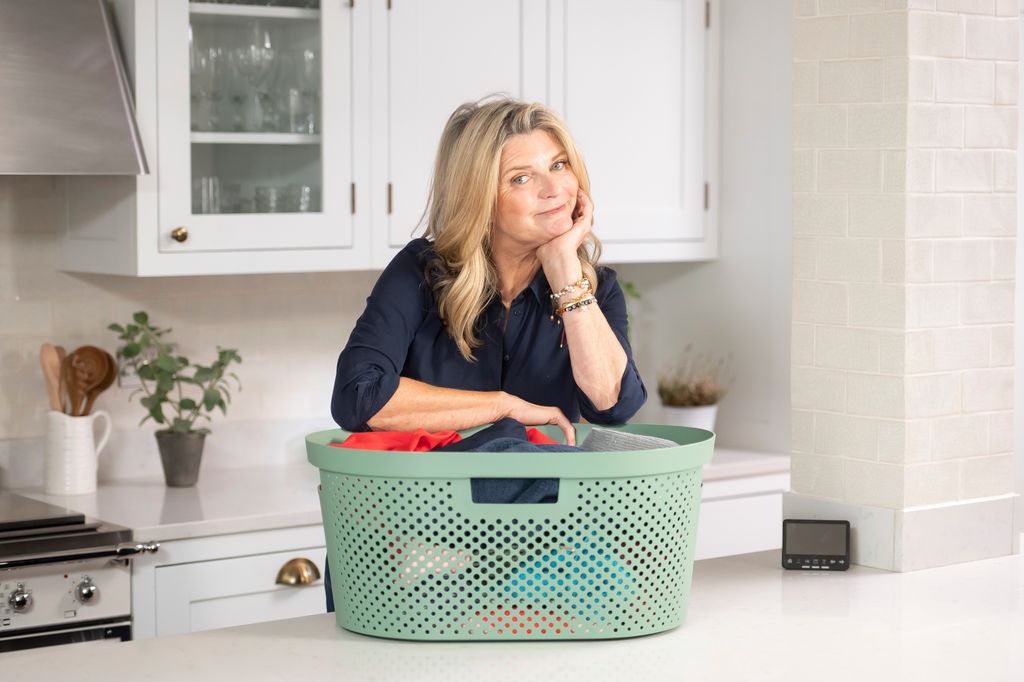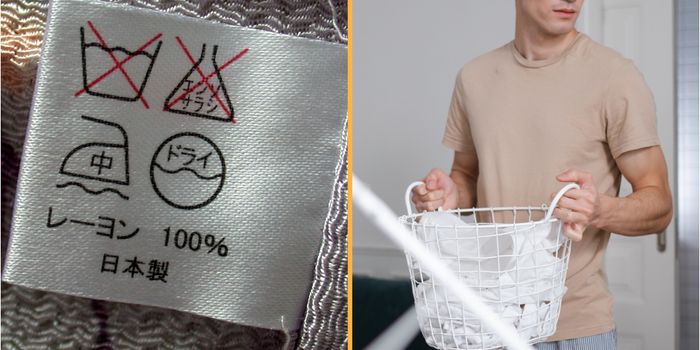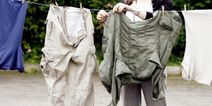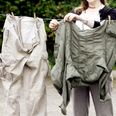It’s not just Rachel from Friends who can’t do laundry
More than seven in 10 adults don’t fully understand what the washing symbols mean on their clothes.
A poll of 2,000 adults found 32 per cent believe there are too many of them to comprehend while 22 per cent get confused by the varying instructions between different items.
And as a result, 20 per cent have given up reading them altogether before loading the machine.
Washing machine symbols prove tricky too, with synthetics cycle (76 per cent), cold wash (49 per cent), and gentle wash (48 per cent) among the most unidentifiable cycles.
Sadly, for 34 per cent, not properly following the washing instructions has led to their garments being ruined – with wool the most common fabric for this to happen to.
The study, commissioned by Smart Energy GB, also found 40 per cent of Brits are looking for ways to be more energy efficient when doing laundry.
Of those polled who have a smart meter, 60 per cent feel its in-home display has been integral to monitoring their energy use at home.
And 41 per cent reckon it helps them have more of an idea of how much energy is used when doing their laundry.
Following the findings, Smart Energy GB has partnered with style advisor, Susannah Constantine and Energy Saving Trust, to re-imagine laundry labels into easy-to-understand icons and provide tips, tricks and hacks to help consumers lighten the laundry load and save energy this summer.
Susannah said: “For many people summer is their favourite time of the year but with children off school, families going on holidays, having BBQs or picnics and spending more time out and about, it often means more washing.
“It doesn’t help matters that the symbols on laundry labels are so confusing that often we don’t look at them at all.
“That’s why I’m teaming up with Smart Energy GB to help the nation better manage their laundry habits and energy use, one load at a time, and reduce household bills.”
The OnePoll study also found 38 per cent of adults have experienced shrunken clothes, while 36 per cent have dyed items after accidentally mixing loads.
Velvet, silk, and corduroy are the fabrics Brits are least confident washing, with cotton, denim and synthetics proving to be the easiest to clean.
When it comes to washing machines, the average adult only ever uses two settings – despite there being plenty to choose from.
The ‘quick wash’ was named the most popular choice (59 per cent), with only 29 per cent opting for a ‘cold wash’, even though it can help with energy saving.

But four in 10 want to be more energy efficient when doing their laundry, with 70 per cent actively looking for tips and tricks on how they can reduce their household finances.
When seeking advice on how to do their washing and what labels mean, 57 per cent rely on the internet for support, while 32 per cent of those under the age of 25 ask a parent or guardian.
Victoria Bacon, director at Smart Energy GB said: “Summer is the season for endless washing, whether it’s getting out grass, sunscreen or ice cream stains.
“Our research found that households are repeatedly using the same washing settings but also seeking ways to be more energy efficient when doing laundry.
“Of course, the best way to track your energy usage is with a smart meter’s in-home display, but we also want to arm everyone with a few simple tricks to be more efficient with their laundry loads, so they can reduce their energy usage and save money.”
Laundry tips for the household:
Cold washes are just as effective as warm or hot washes: Opt for a 20-30 degree wash where you can to save on energy while keeping clothes fresh. Colder washes are great for protecting materials such as denim and delicates while preventing colour bleeding
Treat tough stains with an old-fashioned pre-soak: Treat stains the old-fashioned way and pre-soak garments overnight in a bowl or bucket and follow with your preferred laundry cycle to save excess energy usage than needed
Air dry where possible: Air drying is the most cost-effective way of drying a laundry load. This doesn’t have to be outside either. If you don’t have any outside space, try placing your drying rack next to an open window to speed up the process
Use a Dehumidifier: When the great British weather isn’t playing ball, a dehumidifier is a useful appliance that can speed up drying times. Simply place it next to a drying rack as a substitute to more energy consuming appliances such as tumble dryers or heated air racks, to help absorb moisture
Throw in the towel: If you do need to use your tumble dryer throughout the summer, try throwing in a dry towel to help your clothes dry faster
Apply the sniff test: While we all love that fresh just-washed feeling, be mindful that you can get more than one wear out of certain garments to help reduce the number of laundry loads. The sniff test is a good way of telling if something truly needs a clean and if doing a small load, be sure to use a quick cycle to be as efficient as possible.
Related links:
Mum gives birth to ‘biggest baby’ as some joke he should already be paying taxes
Brits abroad furious after guests claim sunbeds three and a half hours before pool opens


















































